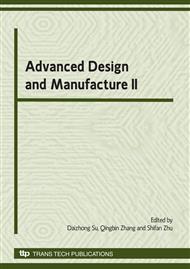p.765
p.769
p.773
p.777
p.781
p.785
p.789
p.793
p.797
Boundary Element Method and its Application for Measuring Moisture Content in Woody Materials
Abstract:
The main aim of this paper is to study the mathematical model of the single planar capacitance sensor by boundary element method. This numerical method is used to compute the solution of the partial differential equation with complex boundary conditions which was established as the model of the single planar capacitance sensor. We find out the relationship between dielectric constant of the measured object and the capacitance value of capacitance sensors. A single planar capacitance sensor, which was set its specific size, is taken as an example, numerical example shows that this method is effective. The method and results can be applied to the practice of engineering, such as measuring wood moisture content and soil moisture contant, etc.
Info:
Periodical:
Pages:
781-784
Citation:
Online since:
October 2009
Authors:
Price:
Сopyright:
© 2010 Trans Tech Publications Ltd. All Rights Reserved
Share:
Citation:


